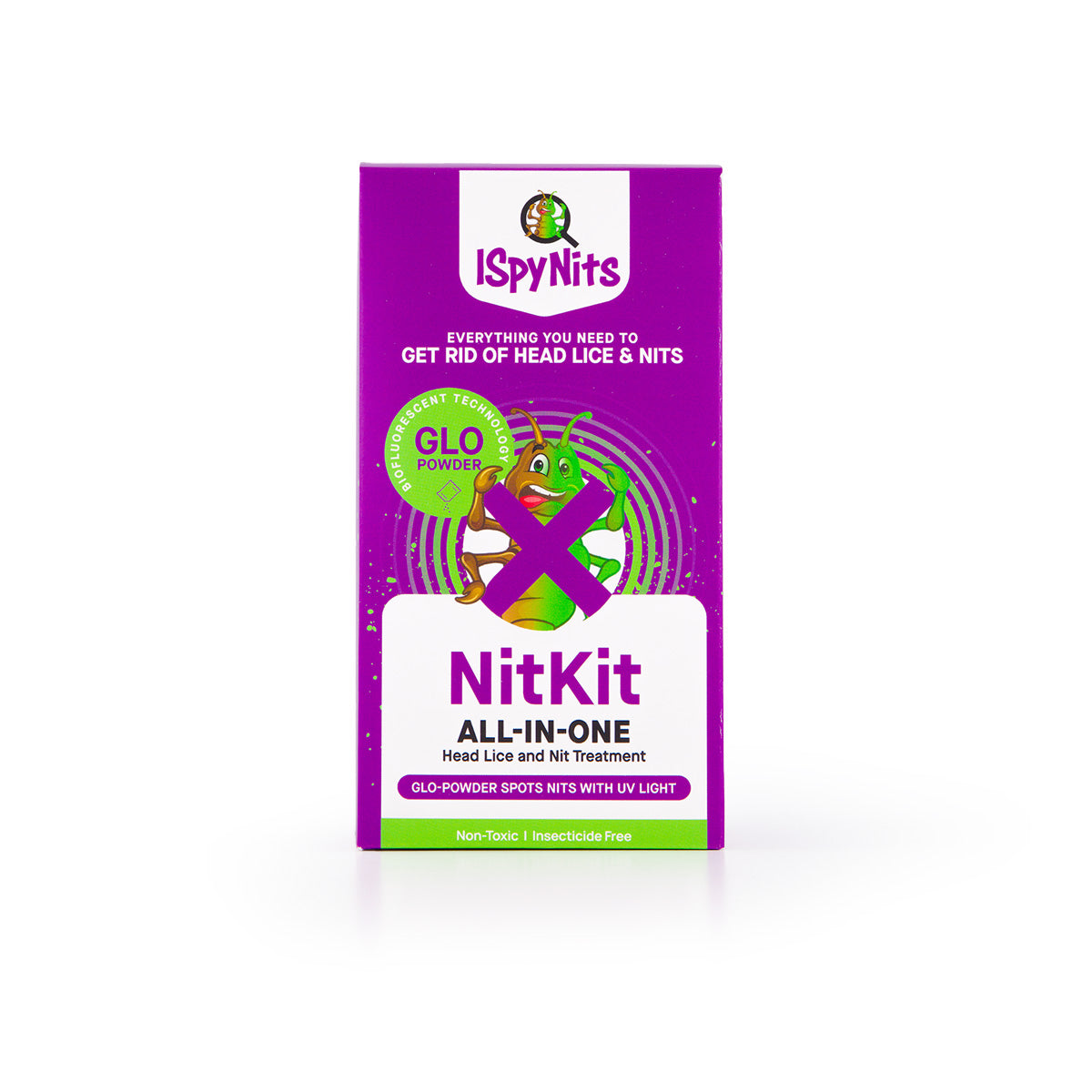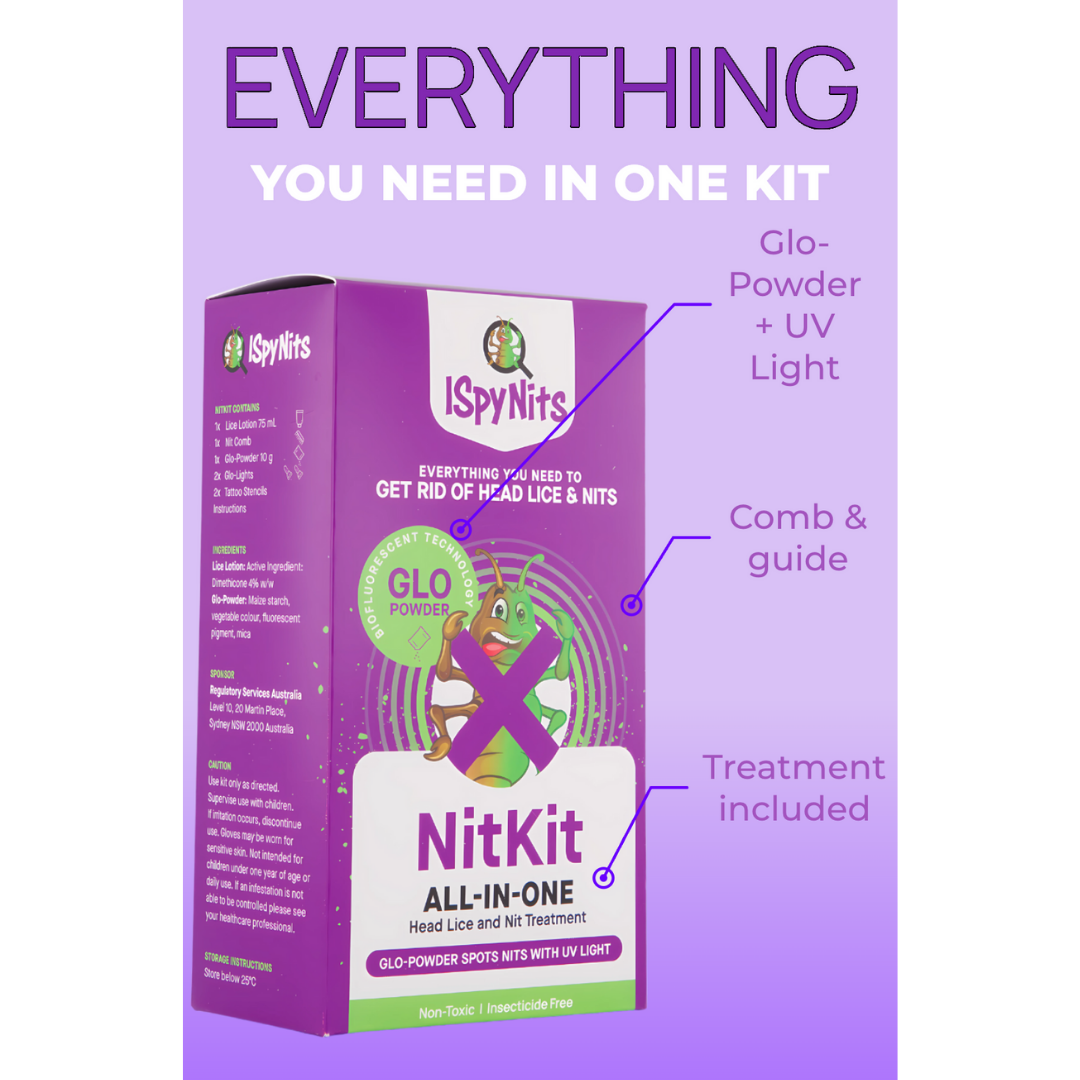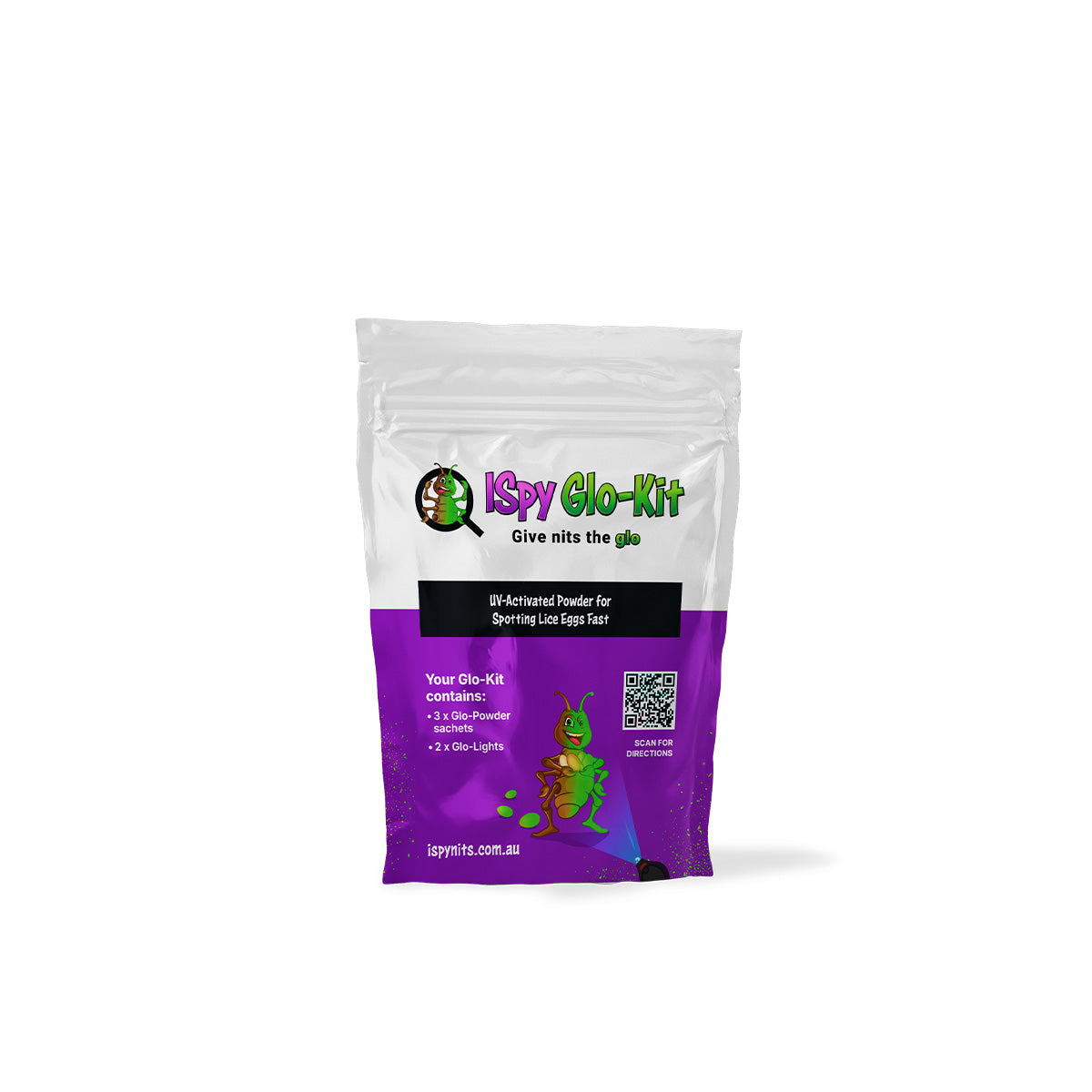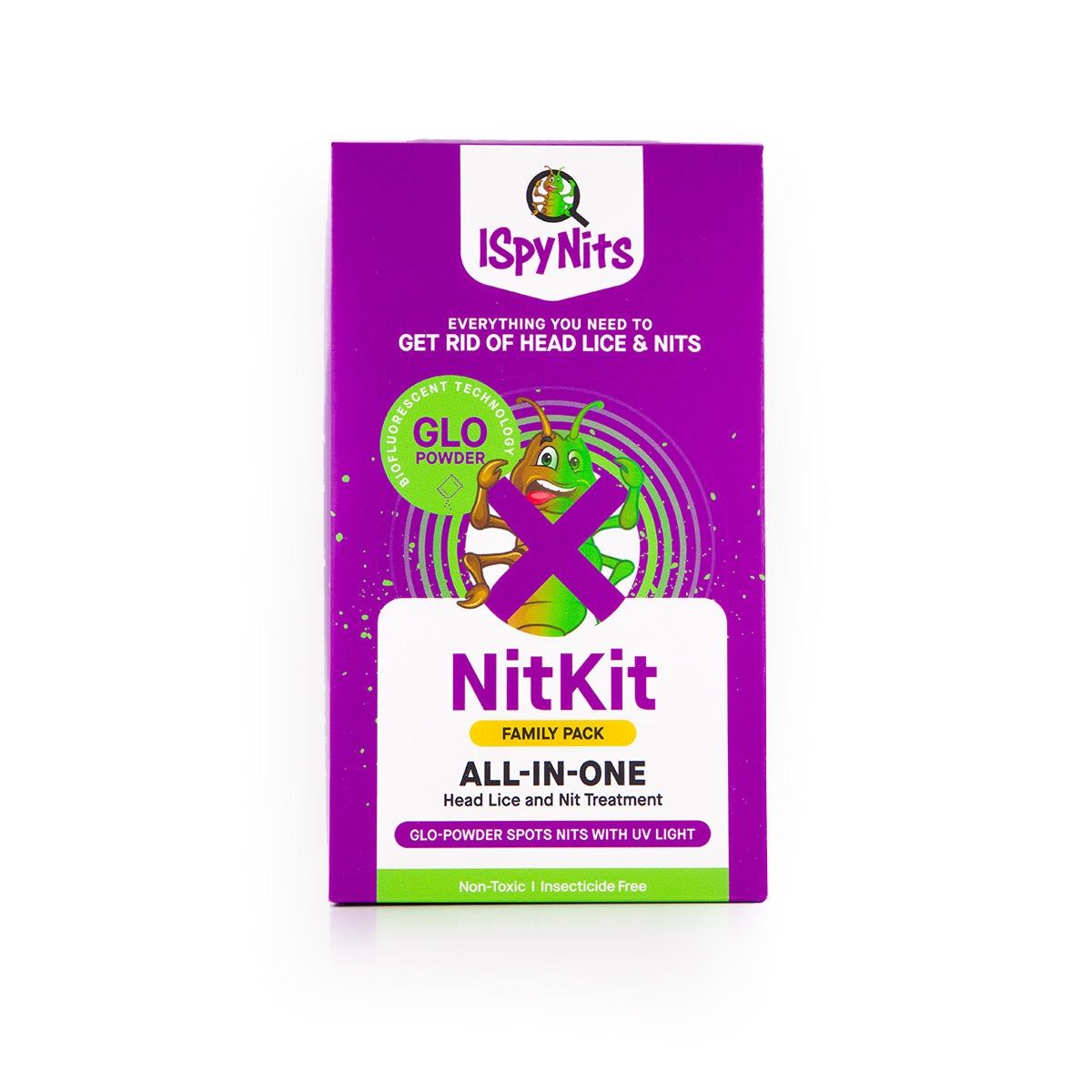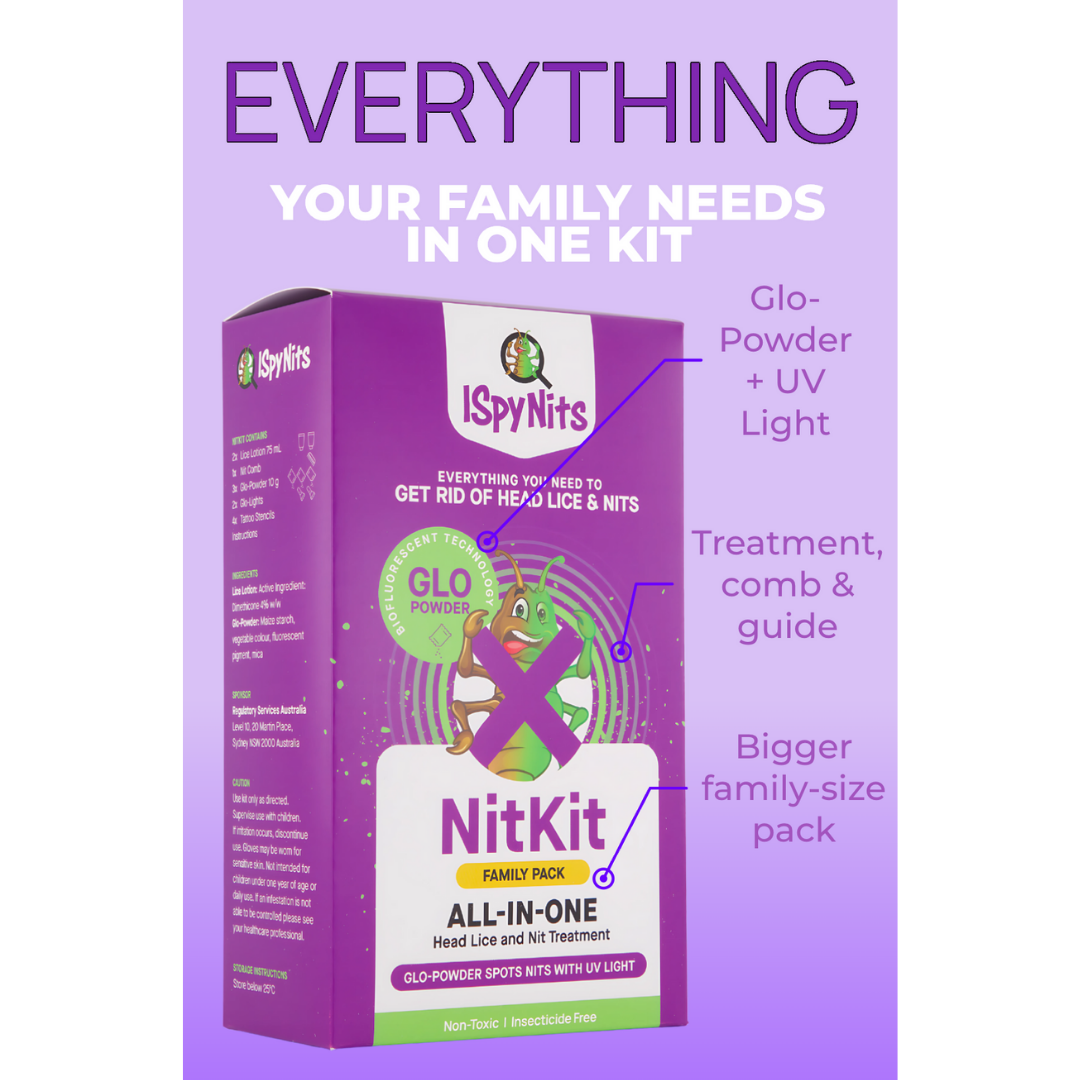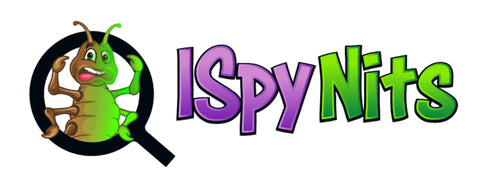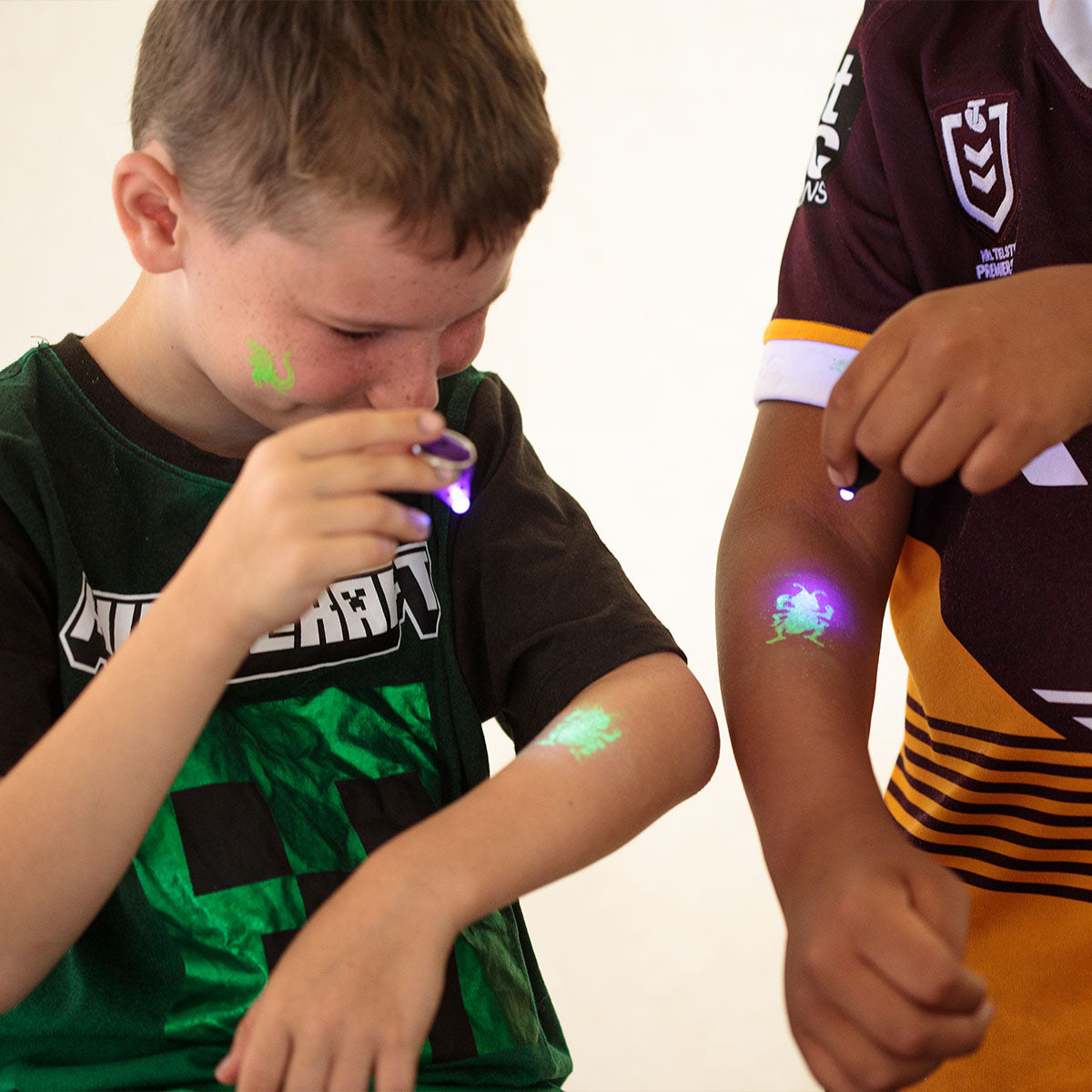Here's a step-by-step guide on how to check for nits_
-
Well-lit Area_ Choose a well-lit area with natural light to inspect the hair thoroughly.
-
Part Hair_ Divide the hair into small sections to make the examination more systematic. Use hair clips or ties to keep sections separate.
-
Use ISpy Glo-powder and UV lights_ apply a light dusting of Glo-Powder over the hair and use UV lights to make the nit eggs glow and remove them with your fingers
-
Use a Nit Comb_ Comb through the hair with the nit comb, specifically designed to trap live lice.
-
Examine the Scalp_ Focus on the scalp, particularly behind the ears and at the nape of the neck, as these are common areas for lice and nits.
-
Look for Nits_ Nit eggs are tiny and can be easily mistaken for dandruff or other particles. However, they are attached to the hair shaft close to the scalp, while dandruff and debris can be easily flicked away.
-
Distinguish Nits from Hair Debris_ Nits are oval and may appear yellow or white. They are about the size of a pinhead. If you're unsure whether what you see is a nit, try sliding it along the hair shaft – nits are attached and won't easily slide off.
-
Check for Live Lice: While checking for nits, also keep an eye out for live lice crawling on the scalp or hair. Adult lice are tiny, brown or translucent insects that move quickly.
-
Repeat the Process_ It's important to check the entire head thoroughly. Nits and lice can be present in various areas of the scalp.
If you find nits or lice, it's essential to take appropriate steps to treat the infestation. We suggest wash bedding, clothing, and personal items to remove dead insects and debris. Regular checks and prompt action can help manage and eliminate head lice infestations effectively.
